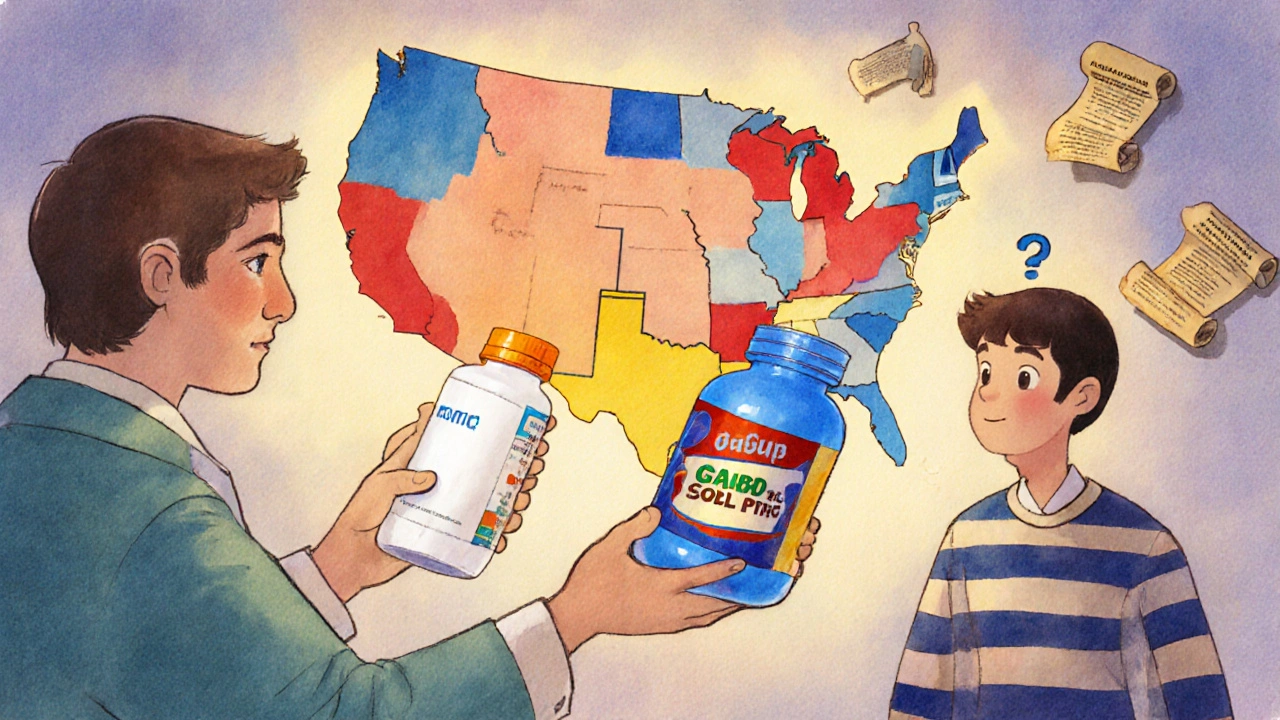
When you pick up a prescription, you might not realize that the pill in your bottle could be a completely different brand than what your doctor wrote on the script. That’s not a mistake-it’s generic substitution, a legal process that lets pharmacists swap brand-name drugs for cheaper, FDA-approved generic versions. But here’s the catch: how this works depends entirely on which state you’re in. One state may force the swap. Another may require your written consent. A third might ban it entirely for certain drugs. There are 51 different rulebooks across the U.S. and Washington, D.C.-and if you’ve ever been confused by why your medication changed or didn’t change, this is why.
What Exactly Is Generic Substitution?
Generic substitution means a pharmacist replaces a brand-name drug with a chemically identical generic version. The FDA requires generics to have the same active ingredient, strength, dosage form, and route of administration as the brand. They must also meet the same strict manufacturing standards. The key difference? Price. Generics cost, on average, 80% less than brand-name drugs. In 2022, 90.7% of all prescriptions filled in the U.S. were for generics, saving patients and insurers an estimated $313 per prescription.
But the law doesn’t automatically allow substitution. Before the 1980s, pharmacists were legally required to dispense exactly what the doctor ordered-even if a cheaper, identical generic existed. That changed when Louisiana passed the first modern substitution law in 1980. Since then, every state and D.C. has created its own rules. The federal government sets the baseline through the Orange Book, which lists drugs and their therapeutic equivalence ratings. But states decide whether pharmacists can, must, or can’t make the switch.
Mandatory vs. Permissive Laws: Who Gets to Decide?
State laws fall into two main buckets: mandatory and permissive.
In 19 states-including California, New York, and Texas-pharmacists are required to substitute a generic if it’s available and the prescription doesn’t say "dispense as written" or "no substitution." The law says they shall do it. The goal? Cut costs. Studies show these states see generic use rates 8-12 percentage points higher than states with permissive laws. That translates to $50-$150 saved per prescription on average.
In the other 31 states and D.C., substitution is optional. Pharmacists may swap the drug, but they don’t have to. In Alaska, Delaware, Maine, and New Hampshire, pharmacies must post signs saying substitution is allowed. That’s meant to inform patients, but it doesn’t force the swap. This creates a patchwork. A patient in Florida might get a generic automatically. A patient in Ohio with the same prescription might get the brand-name version unless they ask for the cheaper option.
Consent Rules: Do You Have to Say Yes?
Even in states where substitution is allowed, patient consent plays a big role. Seven states-Connecticut, Hawaii, Maine, Maryland, New Hampshire, Vermont, and West Virginia-plus D.C., require explicit patient consent before a substitution can happen. That means the pharmacist has to explain the change and get you to sign or verbally agree.
Why? Because some drugs have a narrow therapeutic index (NTI). That means even tiny differences in how the body absorbs the drug can cause serious side effects or make it ineffective. Drugs like warfarin (a blood thinner), levothyroxine (for thyroid), and certain antiepileptic medications fall into this category. Kentucky bans substitution of NTI drugs entirely. Hawaii requires both doctor and patient consent before swapping antiepileptic drugs.
Meanwhile, 31 states plus D.C. require notification after the fact. You won’t be asked before the switch, but you’ll get a notice on your receipt or a phone call. A 2022 study found that patients in these states were 12.7% less likely to use generics in the year after a new drug came out-because many didn’t even know they’d been switched.
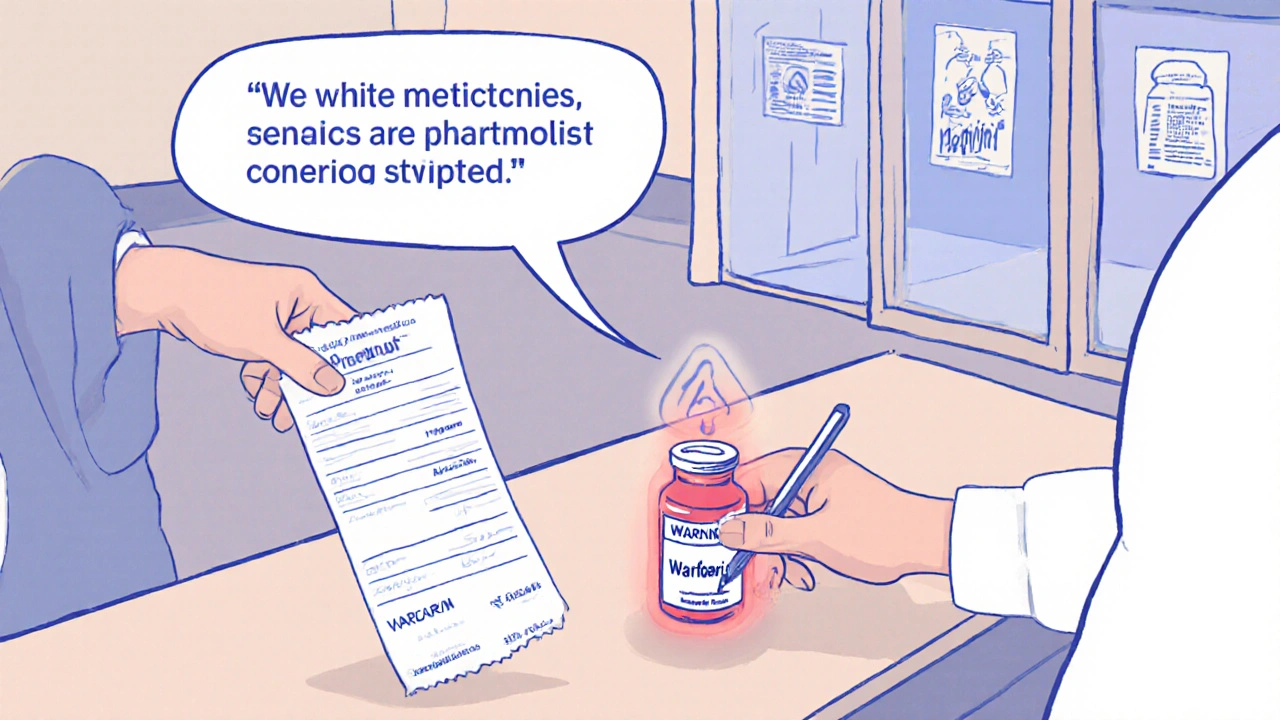
Biologics and Biosimilars: A Whole New Layer
It gets more complicated with biologics-complex drugs made from living cells, like Humira or Enbrel. These can’t be copied exactly, so the FDA created a new category: biosimilars. These are highly similar, but not identical, to the original biologic.
Forty-five states treat biosimilar substitution much more strictly than generic substitution. In 48 states and D.C., pharmacists must notify the prescribing doctor within 2-7 days after switching a patient to a biosimilar. Six states that require generic substitution (like Florida and Indiana) still treat biosimilars as optional. Only 11.2% of biologic prescriptions in 2023 were filled with biosimilars-partly because of these legal barriers.
And here’s a hidden problem: patients often don’t know they’ve been switched. A 2022 survey by the National Psoriasis Foundation found 42% of patients on biologics didn’t realize their medication had been changed to a biosimilar-even though state laws required notification. That lack of awareness can lead to confusion, anxiety, and even missed symptoms if the new drug doesn’t work the same way.
Liability and Pharmacist Risk
Pharmacists aren’t just following rules-they’re also watching their backs. Twenty-four states, including Alabama, Illinois, Massachusetts, and Oregon, don’t offer legal protection if something goes wrong after a substitution. That means if a patient has a bad reaction, the pharmacist could be sued, even if they followed all state guidelines.
This fear causes delays. Pharmacists in states without liability protection often hesitate to substitute, especially with NTI drugs. One pharmacist in a multi-state chain told a Reddit community, "I have to check the state rules every time I fill a prescription for someone who lives near a border. It’s a nightmare." The National Community Pharmacists Association found that 68% of independent pharmacists spend 15-30 minutes a day just managing substitution paperwork and questions.
How Technology Is Helping (and Hurting)
Electronic health record systems like Epic have built "State Substitution Rules Engines" that auto-apply the correct law based on the pharmacy’s location. That cut substitution errors by 37% in a 2021 audit. But not all systems are updated. Community pharmacies, especially small ones, still rely on paper handbooks or outdated websites.
The FDA’s Orange Book app and the National Association of Boards of Pharmacy’s interactive map are free tools pharmacists use daily. But they’re not foolproof. A 2022 report from Kentucky’s Board of Pharmacy logged 1,247 incidents involving incorrect substitutions of warfarin and levothyroxine-drugs where even a 5% difference in absorption can cause a stroke or clot.

What’s Changing in 2025?
There’s growing pressure to simplify this mess. In 2023, 12 states introduced the "State Harmonization of Generic Substitution Act," which would create uniform rules across participating states. The FDA updated the Orange Book in 2022 to include new "interchangeability" ratings for complex generics, and 18 states are currently reviewing their laws to match.
Research published in Health Affairs in May 2023 showed that states that simplified their laws between 2018 and 2022 saw generic use jump by 6.8 percentage points on average. In states that removed patient consent requirements, the increase was 11.2 percentage points.
Meanwhile, the Congressional Budget Office estimates that without standardization, the U.S. will waste $4.7 billion annually through 2030 on unnecessary brand-name prescriptions. That’s money that could go toward insulin, cancer drugs, or mental health care.
What You Should Do
Don’t assume your prescription will be switched. Always ask:
- "Is there a generic version available?"
- "Will I be notified if it’s swapped?"
- "Do I need to give consent?"
- "Is this a high-risk drug like warfarin or epilepsy medicine?"
If you’re on a biologic or NTI drug, get your doctor to write "dispense as written" on the prescription if you want to avoid substitution. Keep your receipts and check your pill bottles. If the name or color changed and you weren’t told, call your pharmacy. You have a right to know what you’re taking.
And if you’re moving across state lines, update your pharmacy records. A rule that applies in Georgia might not apply in Alabama. Your medication could change-or not-based on a zip code.
Final Thought
Generic substitution isn’t just a pharmacy policy. It’s a system designed to save money-but only if patients understand it. Right now, the system works better for insurers than for people. The real cost isn’t just dollars. It’s confusion, fear, and the risk that someone won’t get the right medicine because the rules are too messy to follow.
Standardization isn’t just about efficiency. It’s about safety. And it’s coming-slowly, but it’s coming.
Can my pharmacist substitute my brand-name drug without telling me?
In 31 states and Washington, D.C., pharmacists can substitute a generic without asking you first, but they must notify you after the fact-usually through your receipt or a phone call. In 7 states plus D.C., they need your explicit consent before switching. If you’re on a high-risk drug like warfarin or an antiepileptic, some states require both your doctor’s and your permission. Always check your pill bottle and receipt for changes.
Are all generics the same as the brand-name drug?
For most drugs, yes. The FDA requires generics to have the same active ingredient, strength, and effect as the brand. But for drugs with a narrow therapeutic index-like levothyroxine, warfarin, or seizure medications-even tiny differences in absorption can matter. That’s why some states ban substitution for these drugs or require extra consent. Not all generics are equal in every situation.
Why can’t I get a generic for my biologic drug like Humira?
Biologics are made from living cells, so exact copies aren’t possible. Instead, you get biosimilars-drugs that are highly similar but not identical. In 45 states, substitution requires extra steps: the FDA must designate the biosimilar as "interchangeable," the pharmacist must notify your doctor within 2-7 days, and in some states, you must give consent. These rules are stricter than for regular generics, which is why biosimilars make up only 11.2% of biologic prescriptions.
Do insurance plans push for generic substitution?
Yes. Medicaid programs in 42 states require generic substitution and charge lower copays for generics. Commercial insurers often do the same by placing generics on lower tiers of their formularies. If you don’t choose the generic, you might pay more out of pocket. But your doctor can override this by writing "dispense as written" on the prescription.
What should I do if my medication changed without warning?
Call your pharmacy immediately. Ask if the drug was substituted and whether it was done legally under your state’s rules. Check the pill’s appearance, size, and imprint code. If you’re on a high-risk drug and notice new side effects, contact your doctor right away. You have the right to know what you’re taking-and in some states, you have the right to refuse the switch.

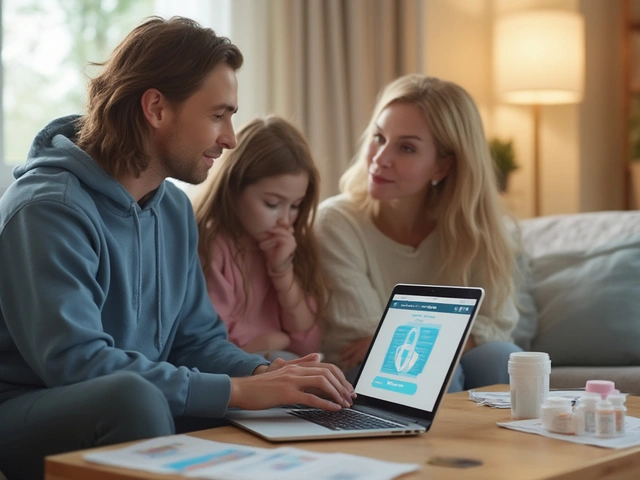

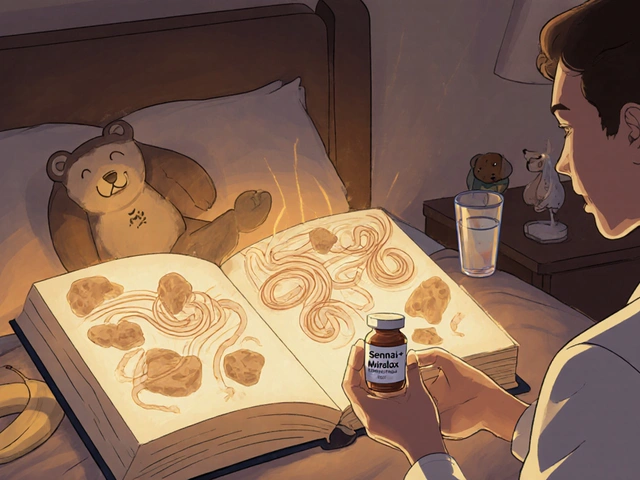
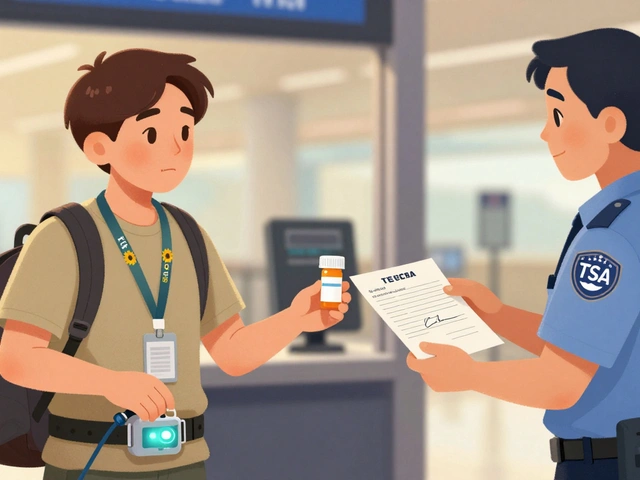

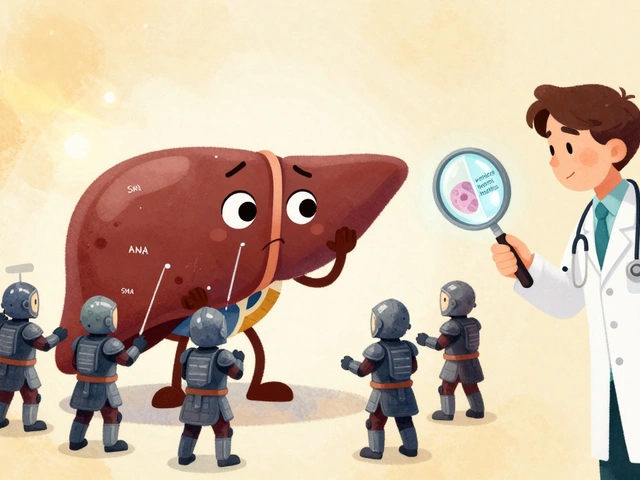
Gayle Jenkins
November 27, 2025 AT 10:50I got switched to a generic for my thyroid med last year and didn’t notice until I saw the pill was a different color. I almost panicked until I called my pharmacy. Turns out it’s legal here in Texas, but they didn’t tell me a thing. Now I always check the bottle and ask. Don’t assume anything-your health isn’t a lottery.
Kaleigh Scroger
November 28, 2025 AT 09:43People don’t realize how dangerous this patchwork system is. I work in a pharmacy in Ohio and we have patients coming in from Kentucky with prescriptions for levothyroxine and we can’t substitute even if they want to because of NTI rules but then their doctor in Kentucky says they’ve been on generics for 10 years so why the hell are we making them pay $200 for a brand when the generic is identical in every way except the filler? The FDA says they’re equivalent but states treat them like they’re different species. It’s bureaucratic insanity. And don’t even get me started on how small pharmacies don’t have the software to auto-update state rules so we’re stuck flipping through PDFs from 2019. This isn’t healthcare it’s a maze designed by someone who hates patients.
Elizabeth Choi
November 29, 2025 AT 12:53Let’s be real. The whole generic substitution thing is just a cost-cutting scheme disguised as patient care. Insurers love it. Pharma hates it. Patients? They’re collateral damage. Studies show 12.7% less generic use when patients are notified after the fact? That’s because people are confused and scared. And let’s not pretend the FDA’s Orange Book is some holy scripture-it’s outdated half the time. The real problem isn’t state laws it’s that nobody in charge actually cares if you live or die as long as the numbers look good on paper.
Savakrit Singh
November 30, 2025 AT 12:10India has one simple rule: generic = default unless doctor says otherwise. No consent forms. No state-by-state chaos. Just lower prices and higher access. 🇮🇳 Why does the US make everything so complicated? 😅 Maybe we need to stop treating medicine like a legal puzzle and start treating it like a human right. 🤔
Cecily Bogsprocket
December 2, 2025 AT 06:46I think about this every time I fill a script for my mom who’s on warfarin. She’s terrified of switching because she read online that generics can be "different." And honestly? She’s right to be. The system doesn’t just fail her-it gaslights her. We’re told generics are the same, but then we’re told some are too risky to swap. So which is it? The truth is no one’s really protecting patients. We’re just shifting blame between pharmacists, doctors, insurers, and state boards. And the person who pays the price? The one holding the pill bottle wondering if they’re about to have a stroke because a pharmacist followed a rule they didn’t fully understand.
Jebari Lewis
December 3, 2025 AT 21:55As someone who works in health policy I can confirm: this system is a disaster waiting to happen. The 2022 Kentucky report on 1,247 warfarin substitution errors? That’s not a glitch. That’s a systemic failure. And yet Congress still hasn’t passed a single federal standard. Why? Because lobbying from brand-name pharma is too strong. And don’t get me started on biosimilars-45 states require doctor notification but don’t require patient notification? That’s not safety. That’s negligence. We need federal oversight. Now. #MedicationSafety
Emma louise
December 5, 2025 AT 04:59Oh wow. So now we’re blaming the states for being too strict? What’s next? Asking the FDA to stop regulating drugs because it’s "too complicated"? Maybe if people stopped trying to save a few bucks on their meds and just paid for the brand-name like they’re supposed to, none of this would be a problem. I mean, if your life depends on it, why would you risk it on some cheap knockoff? 🤷♀️
sharicka holloway
December 5, 2025 AT 10:09My grandma got switched to a generic for her seizure med and had a seizure the next day. She didn’t know until the pharmacy called two days later. We’re not talking about aspirin here. We’re talking about brain chemistry. I wish more people understood that. Just because something’s cheaper doesn’t mean it’s safe for everyone. Always ask. Always check. Always trust your gut.
Alex Hess
December 7, 2025 AT 02:12This post is 80% fluff. Everyone knows generics are fine. The real issue is lazy doctors who don’t write "dispense as written" and pharmacies that can’t be bothered to follow the law. Stop making this a national crisis. It’s not. It’s just bad execution. Fix the loopholes. Don’t rewrite the entire system.
Leo Adi
December 8, 2025 AT 00:57My cousin in Florida got switched to a biosimilar for her psoriasis. She didn’t know until she saw the price drop on her receipt. She panicked. Then she called her doctor. Turned out the biosimilar worked better. Now she’s saving $1,200/month. So maybe the system isn’t broken. Maybe it’s just poorly communicated. A little education goes a long way.
Melania Rubio Moreno
December 9, 2025 AT 20:29generic substution is a scam. i got switched to sumthin that looked like a candy pill and now i feel like a zombie. why cant they just leave my brand alone? its not like i cant afford it. plus the new one tastes like plastic. 😒
Gaurav Sharma
December 10, 2025 AT 13:14Let me be clear: this entire system is a liability minefield for pharmacists. Every substitution is a potential lawsuit. And yet, states demand compliance without offering protection. The result? Pharmacists refuse to substitute out of fear. Patients lose. The system fails. The solution? Federal liability shield + mandatory patient education. No more gray areas. No more excuses.